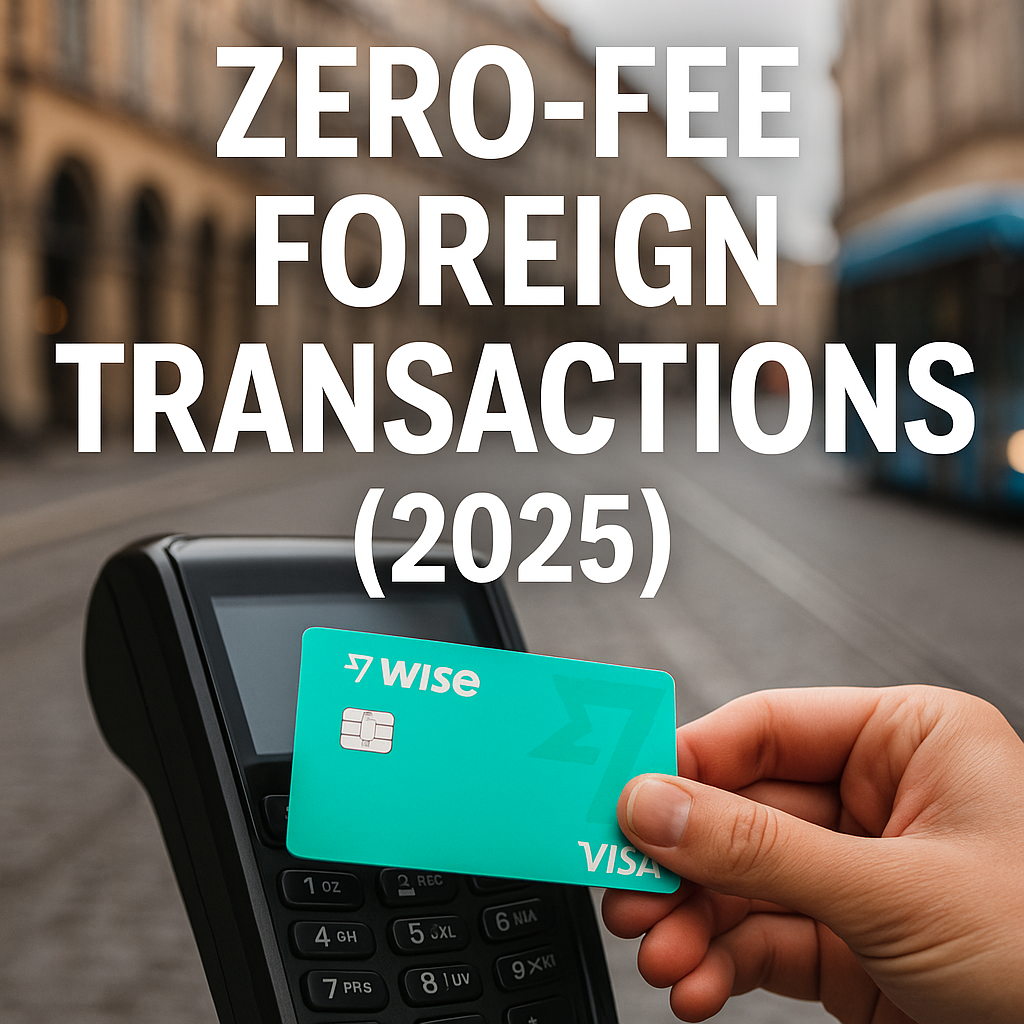For global travelers, expats, and digital nomads, foreign transaction fees can quietly drain your finances. In 2025, zero-fee payments abroad are not a luxury—they’re a necessity. But how do you actually achieve that?
Here’s what you must know if you want truly zero-fee international spending:
1. The Hidden Architecture of Foreign Fees
Most people are shocked to learn that a single international transaction can include up to three layers of fees:
- Bank Fee – Charged by your issuing bank, often 1–3%
- Card Network Markup – Visa, Mastercard, or Amex typically add 0.2–1.0%
- DCC Fee (Dynamic Currency Conversion) – Up to 6–8% if you select your home currency at foreign terminals
A payment that looks fee-free may actually cost you 8–12% more in the background.
2. Zero-Fee Doesn’t Mean What You Think
Many “zero-fee” cards only remove the bank’s fee, leaving the other two layers untouched. That means you might still be paying hidden conversion markups, especially if you’re unaware of how the terminal processes your currency.
True zero-fee means:
- No issuing bank fee
- No network markup or mid-market rate used
- DCC rejected at every point of sale
3. The Multi-Currency Wallet Revolution
Fintech is rewriting the rules of international payments. Services like Wise, Revolut, N26, and Charles Schwab now allow users to:
- Hold multiple currencies in one wallet
- Convert funds at real-time mid-market rates
- Spend globally with physical or virtual cards
- Avoid ATM withdrawal fees (Schwab refunds all fees globally)
Example: A U.S. digital nomad in Spain using a Wise card paid only $0.50 on a $1,000 hotel booking due to mid-market conversion + no bank fee. A traditional bank would have charged $30+.
4. How to Completely Avoid DCC Traps
DCC is a common scam that sounds helpful. At checkout or ATMs, you’ll be asked:
“Would you like to pay in USD?”
It feels familiar—but saying “Yes” triggers a foreign bank’s exchange rate, which is often 5–8% worse than real-time FX. Always choose “Local Currency” (e.g., EUR, KRW, JPY).
Tip:
Add a sticker to your physical card:
“ALWAYS DECLINE DCC – Choose Local Currency”
This small step can save you hundreds annually.
5. Know Your Card’s Fine Print in 2025
Even in 2025, many banks still charge hidden fees. Here’s what to check before any international use:
| Card Feature | Ideal Value | Why It Matters |
|---|---|---|
| Foreign Transaction Fee | 0% | Anything above 0.5% eats your margin |
| ATM Withdrawal Fee | $0 + Global Refund | Travel often? This is key |
| FX Rate Type | Mid-Market Rate | Avoid “retail” bank rates |
| DCC Policy | User Override | Must let you choose local currency |
| Monthly Maintenance | $0 | No account-keeping charges |
Action:
Before traveling, call your bank and ask:
“Does this card charge foreign transaction fees? What FX rate does it use? Is there a DCC override?”
6. Use Fintech + Strategy Together
Tools alone don’t save you money. You need the right behavior + tools:
Right Tools
- Wise: Best for multi-currency use and sending money
- Revolut: For travelers who want analytics + instant budgeting
- Charles Schwab: ATM fee reimbursement globally
- Capital One Venture: Great travel perks + no FX fee
Right Behavior
- Always decline DCC
- Check currency before confirming payment
- Avoid using debit cards with poor overseas support
7. Real-World Case Study: Two Travelers, Two Outcomes
Traveler A:
- Uses Chase Visa
- Accepts DCC in London
- Pays in USD
→ Hotel charges 7.5% higher rate
→ Additional 3% FX fee from bank
→ Total overpayment: $105 on $1,000
Traveler B:
- Uses Wise multi-currency card
- Pays in GBP
→ No bank fee, real-time rate
→ Total fee: $0.75
Conclusion: Knowing what to reject is as important as what to use.
8. Building a 100% Fee-Free Setup (Starter Checklist)
Open a Wise or Revolut account
Order a multi-currency debit card
Activate virtual cards for online purchases
Link to your travel wallet (Apple Pay, Google Pay)
Avoid cards with ATM restrictions
Use local currency only
Research each country’s DCC practices (Japan, South Korea = very common)
9. Bonus: The Countries with the Worst DCC Rates
Some nations have notoriously aggressive DCC schemes. Be extra alert here:
| Country | Avg DCC Fee | Risk Level |
|---|---|---|
| Thailand | 7.5% | Very High |
| UK | 6.2% | High |
| Japan | 5.9% | High |
| Spain | 5.5% | Medium |
| South Korea | 4.8% | Medium |
Source: DCCGlobalIndex.com, 2025 Annual Report
Final Thoughts
Fee-free international payments are no longer reserved for financial nerds or crypto maximalists. With the right planning and habits, any traveler, expat, or global citizen can save hundreds each year. In 2025, it’s about awareness, preparation, and smart execution.
Don’t let outdated banks or sneaky merchants rob you of your money.
Take control of your global payments.
